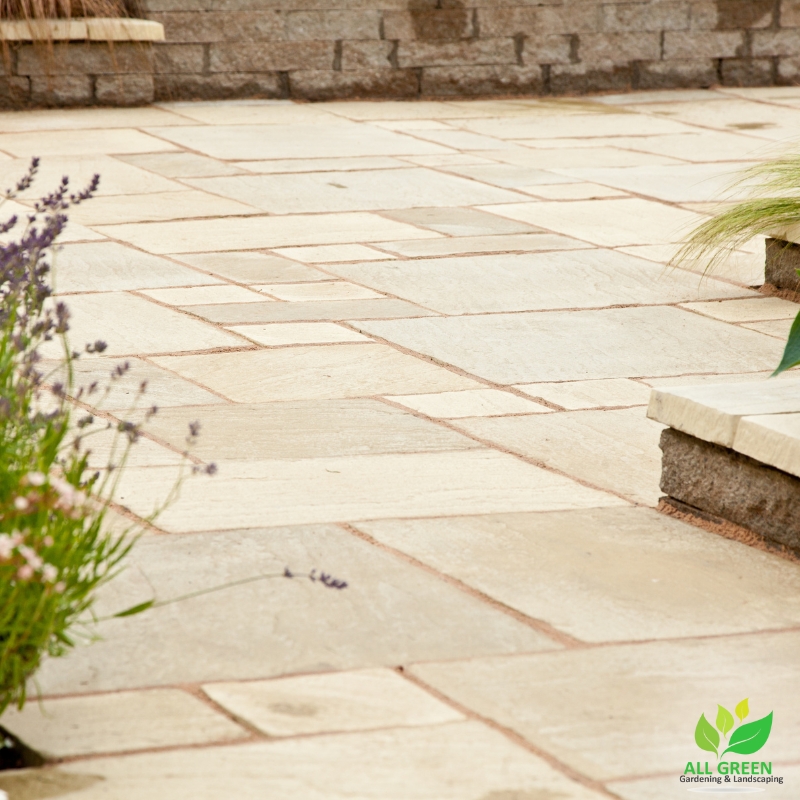Choosing the right material for your outdoor space isn’t just about looks — it’s about long-term value, functionality, and weather resilience. Travertine paving has become a staple for Aussie homeowners who want a stylish yet hard-wearing solution for their patios, walkways, and pool areas. Its natural variation, cool-touch surface, and durability under tough conditions make it a popular option, especially where harsh sun and heavy rains are part of daily life.
Still, it’s not always a walk in the park. If you skip proper installation or grab low-grade stone, you could be stuck with a surface that cracks, stains, or shifts over time. That’s where understanding the full picture makes all the difference.
This guide dives into the benefits of travertine paving while unpacking the common missteps that can spoil your outdoor design. Whether you’re revamping your backyard or planning a new project from scratch, this rundown will help you make the right call.
Why is choosing quality travertine paving a problem for many homeowners?
Not all travertine is created equal, and the cheaper options often come with more headaches than savings. Many homeowners end up selecting stone that’s not rated for outdoor use, or they fall for polished finishes that become slippery when wet.
Some common challenges include:
- Suppliers pushing ba udget stone that lacks density or weather resistance
- Confusing terminology like “filled” versus “unfilled” finishes
- A lack of understanding of thickness and slip resistance for outdoor use
- The temptation to DIY without reviewing the stone paving cost guide standards
Inferior travertine often deteriorates faster, leading to higher long-term costs. It pays to ask the right questions upfront and choose stone with proven performance outdoors.
How can uneven travertine paving surfaces cause issues?
Poor installation is a fast track to an uneven surface, and that’s more than a cosmetic problem. It becomes a tripping hazard, a water trap, and a maintenance nightmare. Even slight height differences between pavers can cause instability, especially on sloped areas.
Watch out for:
- Inconsistent base preparation and lack of proper compaction
- Uneven mortar application or dry-lay techniques used incorrectly
- Natural stone variations are not accounted for during layout
- Ignoring proper fall for drainage, which violates outdoor patio installation standards
Water pooling in low spots accelerates erosion, damages grout, and creates slipperiness. The fix? Hire a professional with solid experience in laying stone to Australian regulations.
What risks are involved if you ignore proper travertine paving installation?
Cutting corners during installation doesn’t just compromise looks — it can create structural and safety issues. Travertine is porous by nature and needs sealing. Without this step, it quickly absorbs moisture, oil, and debris.
Here are the biggest red flags:
- No waterproof membrane or compacted subbase
- No edge restraints leading to shifting pavers over time
- Skipped sealing or wrong sealant used, especially in pool areas
- Absence of joint sand or grout, resulting in weed growth and insect nesting
Poorly installed travertine doesn’t just look shoddy — it can lead to regulatory issues or force a full tear-out. If you’re after natural stone patio inspiration, start by investing in proper preparation and sealing.
How does travertine paving enhance the durability of outdoor areas?
When installed correctly, travertine is one of the most resilient paving choices around. Its structure allows it to resist cracking from ground movement, while its texture offers a naturally non-slip surface even when wet — ideal for Aussie pool zones.
Durability perks include:
- Strong resistance to heat and freeze-thaw cycles
- Porous structure allowing natural drainage
- Surface stays cool underfoot, even in peak summer
- Ages gracefully with minimal fading or erosion
It’s hard to find a more weather-tough paving option, especially for exposed patios or high-traffic areas. That’s what makes travertine a go-to for those wanting durable outdoor stone paving that doesn’t need replacing every few years.
| Feature | Travertine | Concrete | Porcelain |
| Heat Resistance | Excellent | Moderate | High |
| Slip Resistance | Natural texture | Variable | Depends on finish |
| Lifespan | 25+ years | 10–15 years | 20+ years |
| Maintenance Level | Low to moderate | High | Low |
| Cost per Square Metre | Moderate to high | Low | High |
How can travertine paving improve the aesthetic appeal of your garden?
One of the biggest drawcards of travertine is its timeless, earthy aesthetic. Available in soft, neutral tones like ivory, walnut, and silver, it suits both modern and traditional garden designs.
Design advantages include:
- A natural variation that adds depth and movement
- Tones that complement greenery and landscaping elements
- Textures that age beautifully over time
- Seamless integration with outdoor stone flooring ideas for pools, patios, and pathways
It blends with just about any architectural style, so whether you’ve got a coastal home or a bush retreat, travertine fits in like a roo in a paddock.
How can you maintain travertine paving to preserve its look?
Travertine doesn’t need babying, but a bit of regular care keeps it looking schmick. The most important step is sealing — not just once, but every few years depending on wear and exposure.
To keep it in top nick:
- Sweep regularly to remove sand and organic debris
- Rinse occasionally with a mild detergent and water
- Reapply sealant as recommended by manufacturers
- Avoid harsh chemicals or pressure washers that can damage the surface
Using proper cleaners and sealants ensures you’re meeting outdoor stone maintenance tips, not shortening your pavers’ lifespan. Maintenance is a breeze once you get the hang of it, and it helps preserve the premium stone paving solutions you’ve invested in.
Final thoughts on travertine paving for long‑lasting outdoor design
Travertine paving isn’t just about first impressions — it’s a decision that affects the functionality and comfort of your outdoor space for decades. Its natural charm, excellent durability, and low-maintenance nature make it one of the top contenders for patios, garden paths, and pool surrounds across Australia.
That said, getting the right results means putting care into selection, installation, and upkeep. When you follow proper practices and choose quality materials, you’ll create a space that doesn’t just look bonza, but stands up to the elements.
For those weighing up design options, this guide on travertine paving offers a solid place to begin. For tailored ideas and a helpful walkthrough from All Green Gardening & Landscaping, check the paving portfolio and review your site’s needs.

